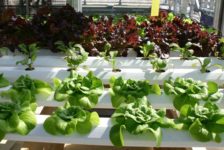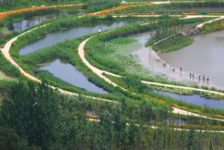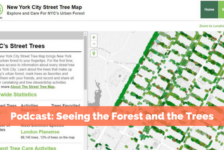Article by Cristina Ferrara Cultural Corridor Chapultepec by FR-EE, in Chapultepec Avenue Mexico City. How many times, strolling on the street with your head held high, have you felt upstaged compared to the surrounding vehicles and buildings? Who, at least once in their life, desired to freely walk in the urban center, without worrying about one’s safety from cars, dangerous crossings, and the traffic noise? Well, something is going to change now in Mexico City because there will be a solution that is going to make the difference; a two-level green corridor running from Chapultepec Park down to the Glorieta de los Insurgentes, dedicated to pedestrians, bikes, skaters, wheelchairs, and strollers at the street level, in specifically designed lanes. It is the CCC– The Cultural Corridor Chapultepec by FR_EE Fernando Romero Enterprise, 1.3 kilometers of reinvented urban space specifically designed to give relevance to public spaces that embrace the history of places and which considers how crucial the presence of green areas are for high quality of life in any city.

Cultural Corridor Chapultepec. Image courtesy of FR-EE
Cultural Corridor Chapultepec
The project aims to “organize the surroundings, will double the green areas, will enhance connectivity and will celebrate the cultural diversity of the city” – says Fernando Romero, general director of FR-EE. Different Functions, one Goal: Make People Happy… and Active! The CCC is a multicultural approach, encouraging people to visit different creative and artistic open rooms; the theater and cinema area, water dedicated spaces, a reading and learning location, music places, and art settings. They are the fil-rouge of the pedestrian tape that lies on two levels; the ground floor and mezzanine, and the first level. Free time can be spent having ping pong matches with friends, visiting art galleries, or reading in the digital public library. Dancing spots and urban musical instruments, speakers, and a dance hall are available for all music-loving people, while a range of emotions are guaranteed at the open air auditorium; others might be stimulated at the first level cinema. If you have children, you can try kids-and-adults’ workshops, interactive fountains, or water exhibitions. All these attractions are perfectly mixed with a restorative mass of vegetation making this site the perfect place to relax and have fun.
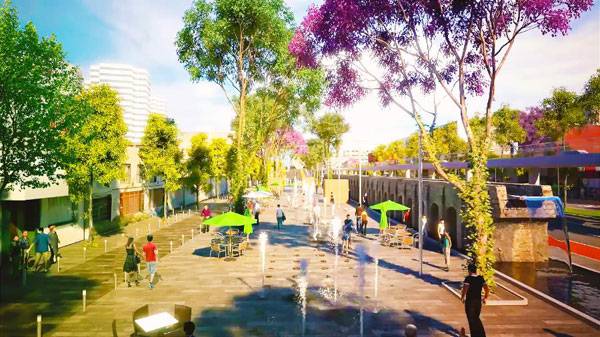
Cultural Corridor Chapultepec. Image courtesy of FR-EE
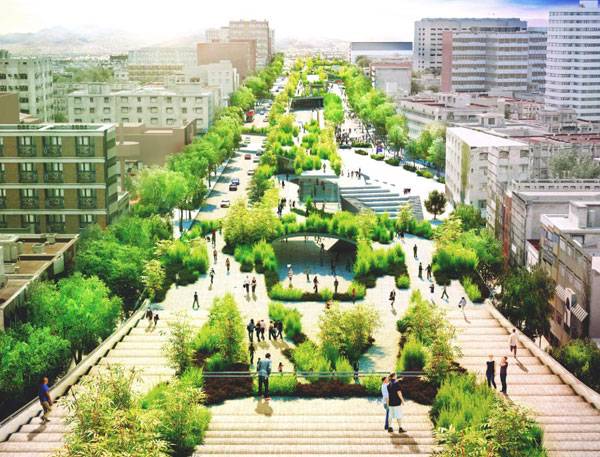
Cultural Corridor Chapultepec. Image courtesy of FR-EE
Full Project Credits For the Cultural Corridor Chapultepec:
Project Name: Cultural Corridor Chapultepec (Spanish: Corredor Cultural Chapultepec) Client: Sapi de CV Date: 2015 – 2017 Location: Chapultepec Avenue, between Lieja street and the Glorieta de los Insurgentes, Delegación Cuauhtémoc, 06700, Mexico City Program: Mixed use Construction Area: 452,085 square feet (42,000 square meters) Architects: FR-EE / FRENTE / RVDG Landscape Design: Mario Schjetnan GDU FR-EE Team: Fernando Romero, Mauricio Ceballos, Raymundo Zamora, Ignacio Méndez, Gustavo Pérez, El Mehdi Belyasmine, Montserrat Fragoso, Libia Castilla, Diego Velázquez, Alba Díaz, Gaia Cella, Pedro Ramírez, Ignacio Herrera, Aarón García, César López, Cecilia A. Pérez, Angélica Ortiz, Alejandro Magallón, Carlos Flores, Karen Soto, Antonio Carpio, Miguel Araujo, Diego Venegas, Christian García, Jessica Wang, Rigel Scarlett Dávila Cantú, Christopher Alexander Hernández Muñoz, Alan Mauricio Parra Vázquez, Ana Laura Cardoso Rodríguez, Vania Velasco Rodríguez, Oswaldo Guzmán Montero, José Jorge Carbajal Domínguez, Clarissa Moreno Tapia, María Fernanda León Sánchez, David Ari Orozco Suarte, Saúl Flores López, Adriana Jaquez Anguiano, Martha Angélica Villa Vivas, Diego Venegas Cuevas, Luis Enrique Torres Lira, Raymundo García Meneses, Edgar Campusano Ramírez, Araceli Damián Navarrete, Annia Rocha, Luis Enrique Pérez Cervantes, Viridiana Quintana García, Manuel A. Archundia Reyes, Osvaldo Jasso Vargas, Aranza Campeche Ramírez, Johana Vega Baltazar, Rodolfo Romero Chávez, Diego Guzmán Penella, Lucy Alejandra Rodríguez Iglesias, Christian García Díaz, Isabel Landín, Yair López Marín, Diego Jacobo Ruvalcaba, Alejandro Hernández Morales, Eunice Marisel Salinas Yáñez, Paola Castanedo Shaadi FRENTE / RVDG Team: Juan Pablo Maza, Ruysdael Vivanco, Jonathan Estrada, Narciso Martínez, Oriana Barrera, Mario Ramos, Mario Alquicira, Tania Juárez, Diana Pérez, Omar Velasco, Ana Pérez External Team: 24 Studio, Colinas de Buen, Ingeniería Experimental, ICA Ingeniería, Lighteam, Ildefonso Rodríguez Recommended Reading:
- Becoming an Urban Planner: A Guide to Careers in Planning and Urban Design by Michael Bayer
- Sustainable Urbanism: Urban Design With Nature by Douglas Farrs
Article by Cristina Ferrara
Published in Blog




